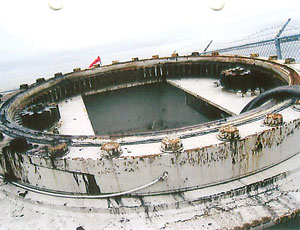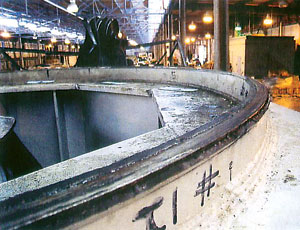Nearly a year before an ill-fated Kodiak tower crane collapsed on Manhattan’s Upper East Side and killed two workers, China-based RTR Bearing Co. sent an e-mail to New York Crane & Equipment Corp., saying, “We don’t have confidence on this welding,” referring to a custom bearing assembly the crane owner had ordered. But New York Crane asked RTR to perform the $21,860 job anyway, according to court papers filed in conjunction with the accident.


Even as personal-injury lawyers are now blaming Brooklyn-based New York Crane and its president, James F. Lomma, for disregarding the early warning, investigators have yet to test the crane. A court call is set for April 22, with, among other things, a goal to finalize protocols for destructive testing. Federal safety officials did not find violations in the May 30, 2008, accident, but city prosecutors are still investigating criminal charges.
“Everybody agrees that it was the Chinese weld that failed,” says Susan Karten, an attorney representing the estate of Ramadan Kurtaj, a 27-year-old sewer technician who died on the operating table hours after the crane fell on top of him. “It was not a matter of how it was going to fail; it was a matter of when.”
The July 6, 2007, e-mail from RTR was the culmination of a series of cost-cutting and time-saving maneuvers to keep the allegedly poorly maintained, decades-old Kodiak in service during a construction boom, adds Bernadette Panzella, an attorney representing Donald Leo, who also died in the collapse. The 30-year-old crane operator, son of a veteran operator and member of operating engineers’ union Local 14-14B, experienced the terrifying, 200-ft fall in the crane before it smashed onto the pavement below and burst into flames.
Documents filed in Manhattan Supreme Court as part of the two negligence cases indicate that Lomma’s crew was pursuing a lightning-strike insurance claim about a year prior to the deadly accident, even though several experts had expressed concerns that the crane was old, unsafe and needed to be scrapped. The crane’s insurer, Travelers Insurance Co., would pay out damages related to a lightning strike, but not fatigue.
The controversy began when a large, 2- to 3-ft-long crack appeared in the crane’s turntable bearing in the summer of 2007 while on another project. Lomma commissioned a third-party investigation, which corroborated lightning damage. But an estimator for Sorbara Construction Corp., the concrete contractor that was using the crane then and last year, wrote to a city inspector that “the Kodiak tower crane…was never struck by lightning.” Larry Shapiro, a local engineer who designed tie-ins for the crane, later e-mailed Peter Juhren, national service manager for Salem, Ore.-based Liebherr dealer Morrow Equipment, noting that he, too, was “skeptical.” Juhren responded that welding current can produce effects similar to lightning, but he concluded that the bearing “was near or at the end of its useful life for quite some time.” He added, “I assume a claim for damages is rearing its ugly head?”
Lomma’s associates had by then received a bid from Ohio-based Avon Bearings for a replacement part that would cost $128,000 and take 28 weeks to produce. So Lomma turned to RTR, which quoted $21,860 and 90 days, even though more than 60 companies in the U.S. could have machined the part. “I understand that [Lomma] is a very personable guy, but his focus is money, money only, and he sacrifices safety,” Panzella says. “This crane was being overworked…and simply trucked from one jobsite to another.”
After machining, the 7-ft-dia. swing bearing needed to be welded to a 1-in.-thick spacer ring, which was welded to the tower’s tabletop, says a source close to the accident. After receiving the part, Lomma sent the Chinese bearing assembly to Elizabeth, N.J.-based Brady Marine Repair Co., court papers show. However, it is still unclear who performed the fatal weld—RTR or Brady.
Lomma referred questions to his attorney, Glenn Fuerth, who says the court papers are taken out of context. “The e-mails that are being referenced…are incomplete,” he says. “After the Chinese company was given the information they went ahead, so they were perfectly capable of doing the work.” The new bearing was tested for defects by three independent engineers, Fuerth notes, exceeding industry standards. The lawsuits, which name Lomma, Sorbara, Shapiro, Brady, New York City, testing firms and others as defendants, were filed in late March. The plaintiffs’ attorneys also are calling into question the care and quality of the federal and city investigations.


Post a comment to this article
Report Abusive Comment